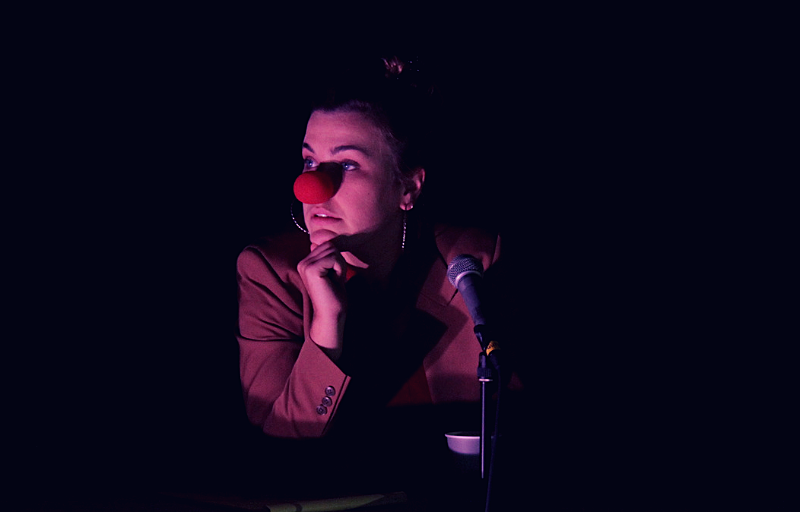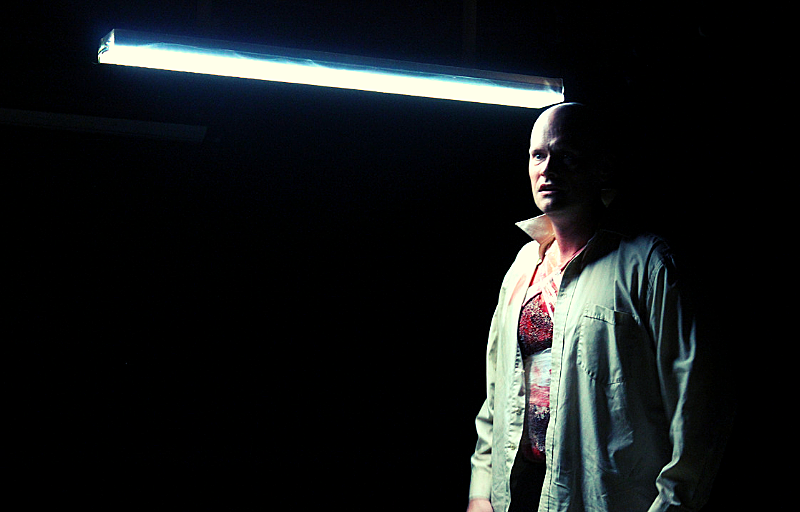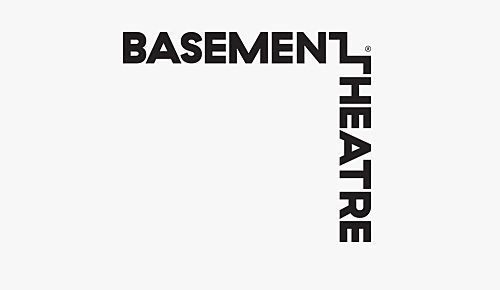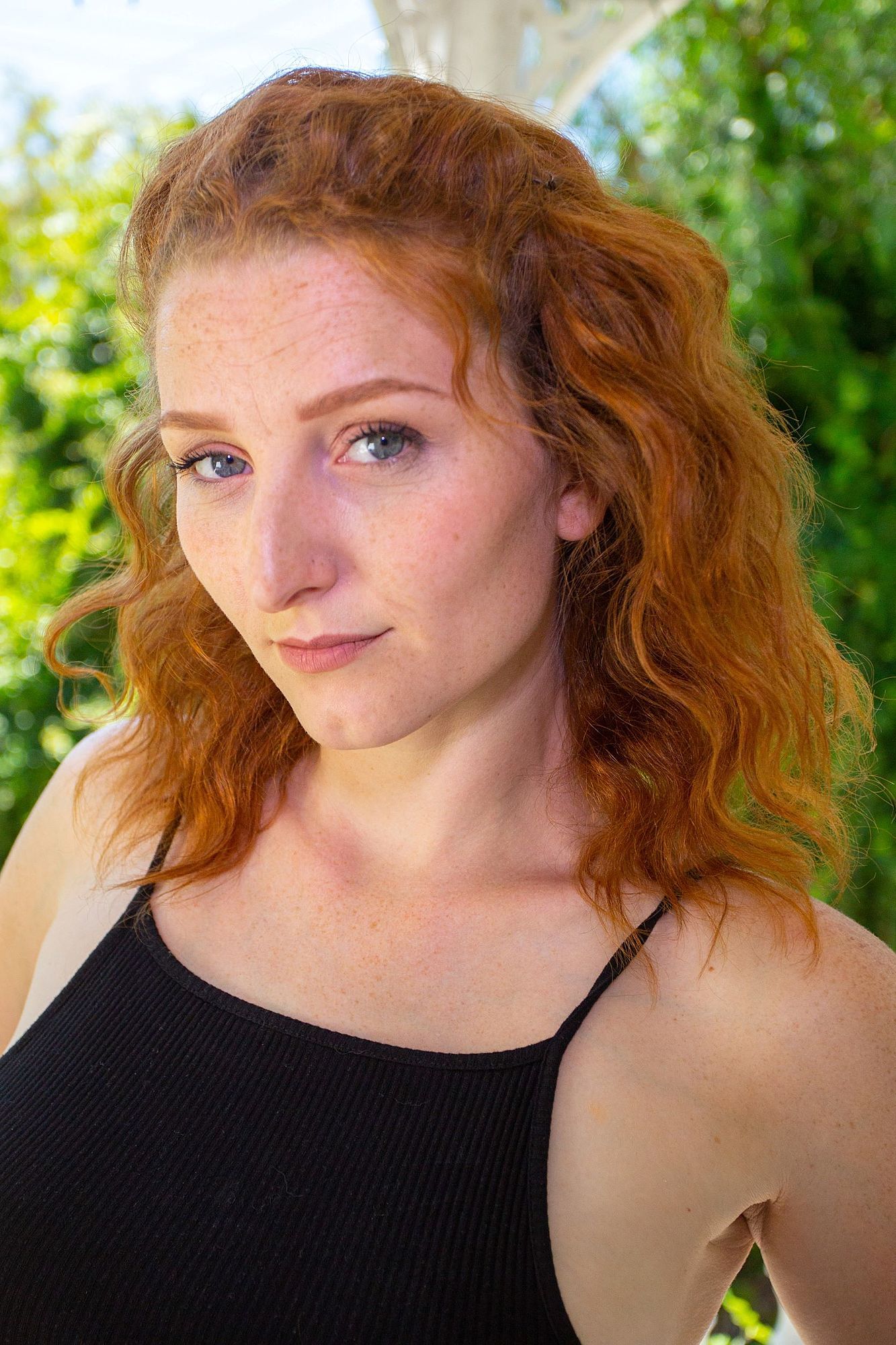Working Through the End of the World: A Review of HeadSand
How do we deal with doomsday on stage? New Volumes critic Rachael Longshaw-Park goes from the board room to the Basement with Fractious Tash's latest surrealist apocalypse.
How do we deal with doomsday on stage? New Volumes critic Rachael Longshaw-Park goes from the board room to the Basement with Fractious Tash's latest surrealist apocalypse.
Note: The last three paragraphs of this piece (after the picture of Sam Snedden) contain considerable spoilers for the final scenes of HeadSand.
There’s something in the atmosphere. A heaviness, a dread. An antithesis of hope.
When I enter HeadSand, Fractious Tash’s new surrealist work, I’m hit with a sensory overload. The Basement’s black box is set up like a boardroom: tables are laid out in a U shape, fencing off the central performance space, and we’re seated at these tables among a group of blank-slate performers with clipboards. I’m uneasy: is this setting us up for interaction, for getting involved later on? Clips from The Twilight Zone flicker on the wall at one end of the room, hinting at a macabre journey ahead. Music is playing out of different speakers in different places at different times. A single woman – performer Sheena Irving – stands in the centre of it all, anxious, oblivious to us. The space pulses like an underground club, heavy bass building, oppressing, swallowing the room as the lights go down. Then as suddenly as we’re plunged into darkness we’re pulled back into the light and from nowhere Saraid Cameron bursts onto the scene, exploding the quiet of the space in ferocious argument. We’re thrust immediately into the action.
I try to piece together the story from choppy dialogue about missing husbands and potential workplace harassment. However, as soon as I feel satisfied that I’m beginning connect the dots, Irving steps out and asks some unidentified, omnipresent moderators to scratch her previous statement from the record. We’re confused, betrayed. Whatever is happening, things are not as they seemed.
If you’re hoping for a traditional narrative out of this, Headsand is not the show for you. Taking place during an unnamed, purposefully vague kind of apocalypse, HeadSand plays out in titled chapters, starting in the boardroom of an ultra-generic corporation and working its way down the floors to the basement. Tangential storylines emerge in each chapter, but all are linked by the arrival of this ominous rain. This is a world in turmoil, a world where the flow of time and story are aggressively interrupted. Each chapter explores the different ways that humanity bows to this kind of turmoil and trauma, how fear and pain and desperation push us into action – or force us to run.
We encounter different people in each chapter, starting with Irving and Cameron on the top floor. Irving and Cameron are full of emotional integrity; Irving in particular is especially effective, embodying her frustration with tense, restrictive movements, with emotion carved in her brow. Despite the slippery narratives and metatheatrical games, these naturalistic performances tangle you up emotionally.
Further down the building, Mel Odera is an electrifying presence as an oppressive manager who pushes his employees to mutiny. Odera is frenetic, his lines exploding from his mouth as he loses control of his mob. Sam Snedden, too, flourishes in two of the play’s most fleshed-out roles. Snedden is captivating as the infected office worker Mike, fraught with desperation for human touch; later, he and the equally talented Johanna Cosgrove play the cleaners Curly and Mo with such tenderness, two people who resign themselves to their lack of power in a doomed world.
HeadSand is confirming the worst: it’s too late for us, the world will continue without us, what we have control over is how we embrace our end.
Surrealism is often driven by a feeling or provocation, and in Headsand that feeling is hopelessness. Henson and his design team construct a strong aesthetic to that end, using lighting, set and costume in ways that act in disharmony, matching and elevating this despair. Filament Eleven 11 (Rachel Marlow and Brad Gledhill) feed this unease with their lighting design: their harsh, low-hanging fluorescent lights make the actors look pallid and worn-out, and the distinct, flickering hum draws your attention away from the action, agitating and misdirecting the audience. This lighting comes together with the costuming, a colour palette of sickly pastels, skin tones and shades from black to white, and unifies the cast. It turns them into more of a representative mass than into individuals.
Robin Kelly’s beautifully-executed sound design thickens the atmosphere. Played through tinny mid-2000s computer speakers, his music often comes from different places, never predictable, often playing over itself. The cacophony pulls you in and out of the action but the boardroom staging places us directly in it, denying us the option to shy away. The actors use the opportunity to get close to us, sitting beside us, skulking over us, invading our personal space. This layering makes me uneasy and on edge; as the scenes progress, the dissonance builds and the dialogue contradicts itself and we’re thrust into chaos.
HeadSand’s opacity is often frustrating, but that opacity echoes how overwhelming it is to live in society today. With the explosion of information available to your average person it’s both notoriously difficult and easier than ever to comprehend and be held accountable for all of the evils that we contribute to: climate change, complicated social paradigms, capitalism in general. It’s so much so that there’s a notable trend towards mass denial in the face of overwhelming evidence.
At the root of all these crises, there is a core feeling of utter insignificance which can cause people to bury their heads in the sand. However, there’s been a distinct shift between generations in their reactions to crises like climate change and rising inequality. Older generations overwhelmingly seem to be resigned to the fate of our world, but in the younger generations there is a sense of urgency, clearly demonstrated most recently by the school children who collectively striked around the world on March 15th this year. These are young people who are growing up in a world of uncertainty, led by apathetic leaders and downright deniers. They’re literally fighting for their futures.
This sense of urgency and hope is not addressed in Headsand: instead, the end of the play prioritises rebirth over survival. In one of the penultimate scenes. the parasite responsible for this apocalypse (personified by Cosgrove) explains that nature is chaos and that our need to survive as a species over everything else is based on a self-importance that we’ve constructed for ourselves. The parasite asks the dying Mike, host to millions of new parasitic lives, “Who are you to deny them life?” Mike is convinced by the parasite and we watch him begin the spread of infection that dooms humanity. HeadSand then shifts into the aftermath, and we see Mo and Curly together in another life as humble moths, looking for a place to mate and rest.
As a species we have a tendency to try and make sense of the chaos in our universe. We use everything from our faith in deities to the phases of the moon to construct meaning. So it’s not a new revelation, that nature is chaos, but it’s a compelling one, and it stays with me long after the show ends. It’s as if, in these moments, that HeadSand is confirming the worst: it’s too late for us, the world will continue without us, what we have control over is how we embrace our end. It’s a fatalistic worldview. It doesn’t fill me with hope.
Headsand captures well the zeitgeist of the late 2010s, to the point that what you take away from it is going to be absolutely based on how you feel about the state of the world and whether it can be saved. It’s an effective litmus test; however, for those of us who believe there is still action to be taken, that there is still a war to be won, this feels like an unhelpful exercise in navel-gazing taking up space that could be used to rally for action. After all, what good is commentary if there’s going to be no one left to remember it?
HeadSand runs from March 26 to April 6 at Basement Theatre. Tickets available here.
Header image credit: Two One One Three Creatives.
This piece is presented as part of our New Volumes critical writing partnership with Basement Theatre. Basement Theatre covers the costs of paying our writers while we retain all editorial control. You can read more about the programme here.




